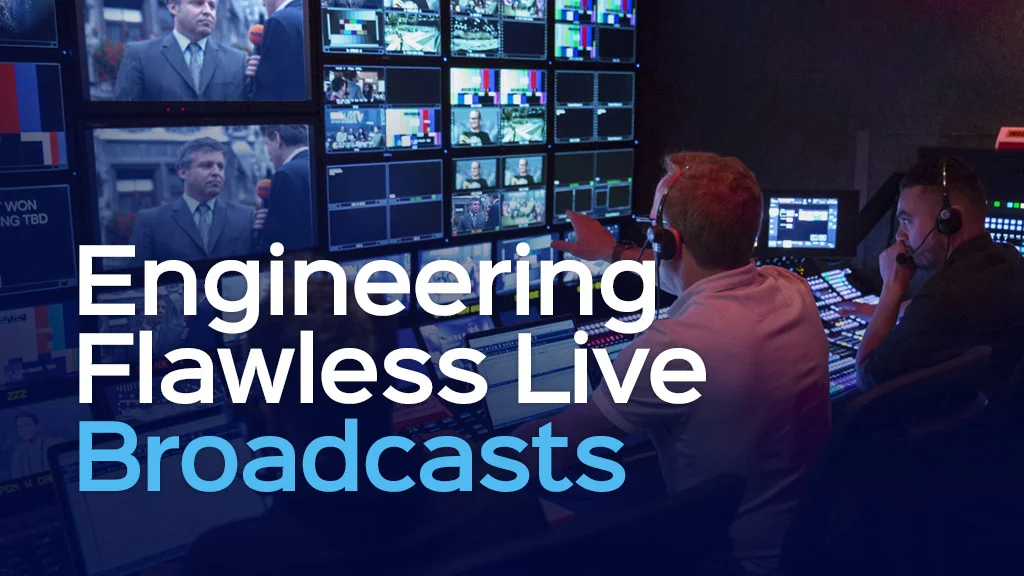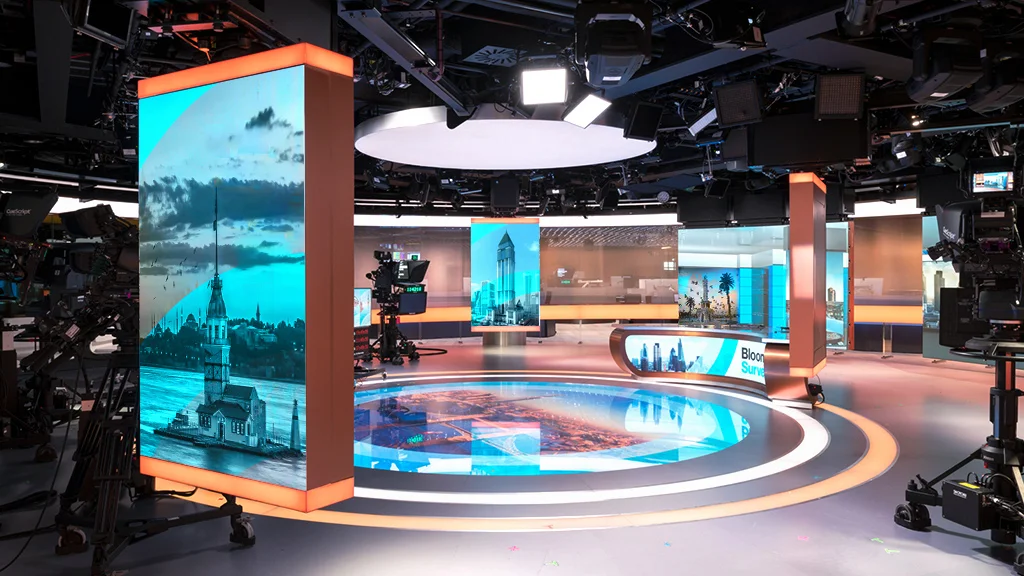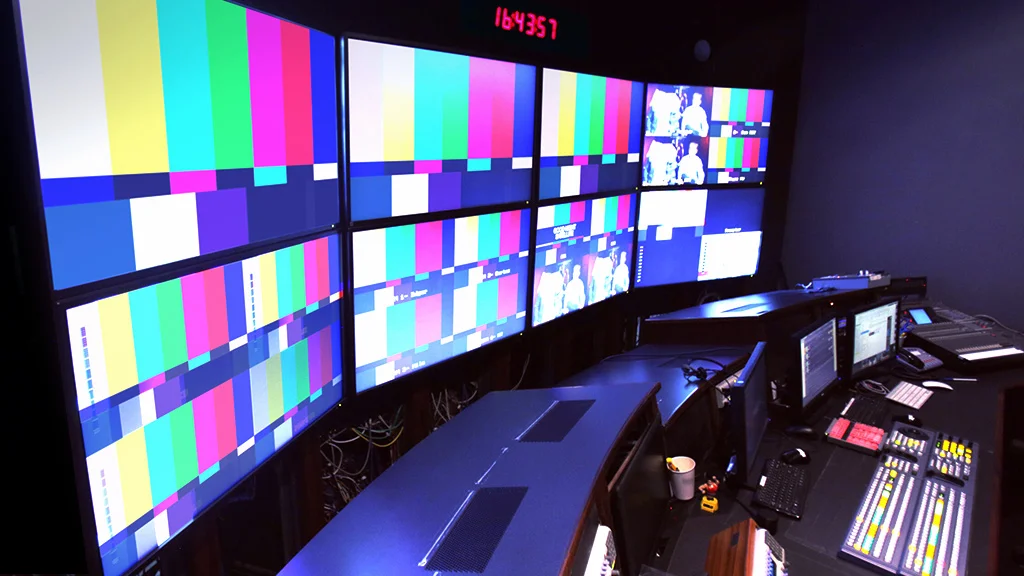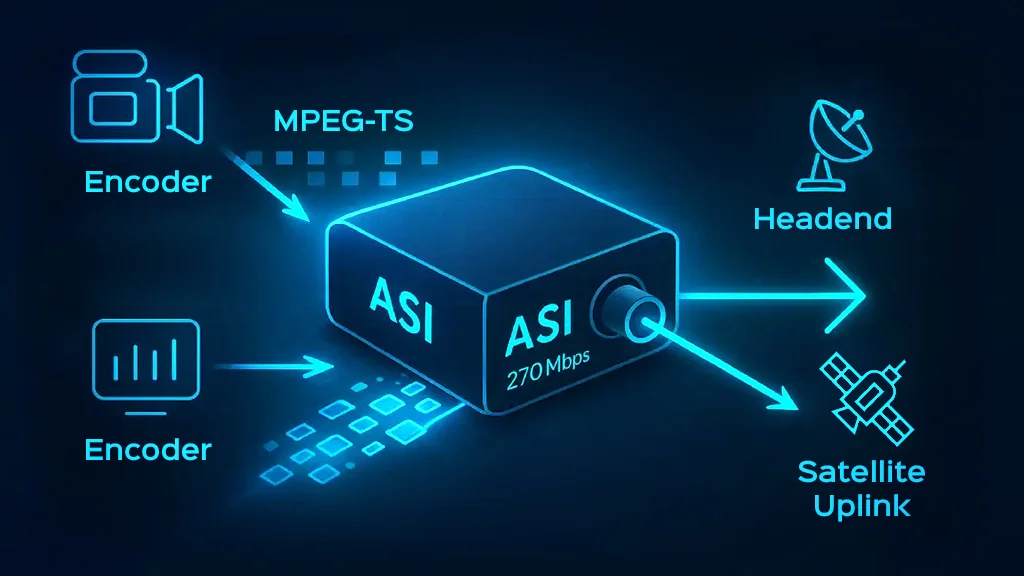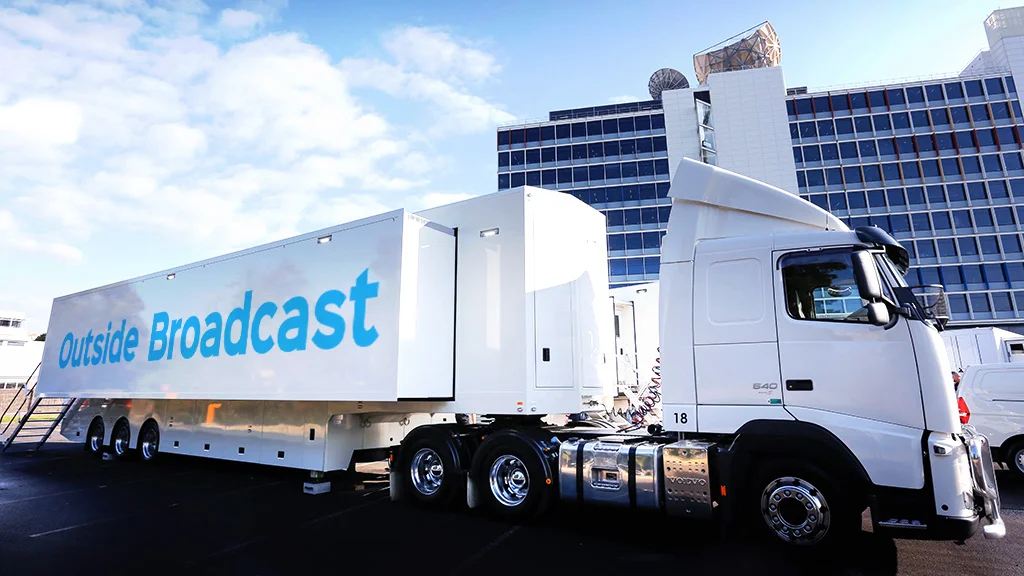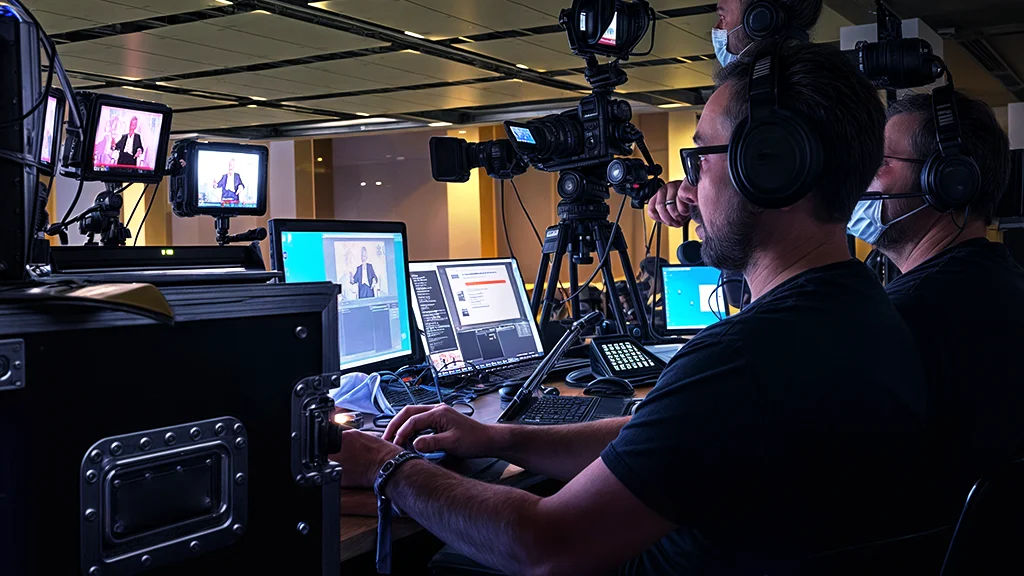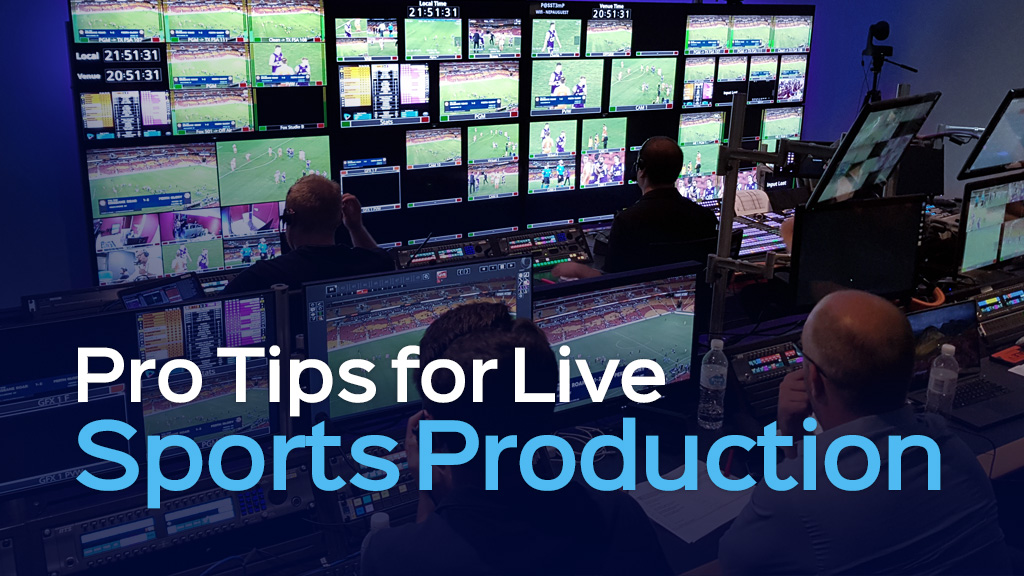
- Article
Live Sports Production Workflow Explained: Tools & Tips
Live sports broadcasting is one of the most demanding and fast-paced types of production in the media industry. It requires careful planning, advanced technology, and a skilled team to pull it off successfully. This article explores the complex workflow involved in live sports coverage, highlighting essential tools, equipment, and practical tips to ensure a smooth and professional broadcast. Additionally, it explains how Samim Solutions can help broadcasters streamline their live sports production processes to achieve maximum efficiency and top-quality results.
About Live Sports Production Workflow
Live sports production involves capturing, managing, and broadcasting a sporting event in real time for a wide audience. The entire process spans from pre-event planning to live transmission and post-event review. It requires quick decision-making, advanced technology, and seamless coordination among various teams such as camera operators, directors, producers, and technical staff. When these components work together smoothly through a well-organized workflow, it results in an engaging media experience.
Pre-Production Planning in live sports production
Pre-production is a precise process that involves detailed planning and preparation to anticipate and address potential challenges before the cameras start rolling. Let’s explore each key aspect:
Scheduling and Coordination
This involves creating a detailed timetable that covers kickoff times, broadcast windows, and key moments to be captured. Clearly assigning roles and responsibilities to team members such as camera operators, commentators, technical staff, and on-air talent ensures everyone understands their duties. Arriving on time, setting up equipment efficiently, and managing shift changes help keep everything synchronized and reduce confusion or delays. Establishing clear communication channels is also essential for quick decision-making during the live broadcast.
Technical Rehearsals
Rehearsing with equipment ensures all systems work flawlessly under live conditions. These dry runs test cameras, audio, lighting, graphics integration, and communication networks like intercoms. Simulating real scenarios such as switching camera angles, inserting graphics, or replaying key moments helps identify and resolve issues beforehand. These rehearsals also give the crew time to familiarize themselves with the venue, troubleshoot problems, and refine their timing.
Content Preparation
Creating engaging visual content is crucial to capturing the excitement of a live event. This includes designing graphics such as scoreboards, player statistics, and sponsor logos. Practicing the insertion of replays and highlight clips ensures they are integrated smoothly during the broadcast. Additionally, preparing multimedia assets like interview footage or pre-recorded segments adds depth and professionalism to the coverage.
Logistics
Behind the scenes, logistical planning guarantees that all equipment is transported, set up, and maintained properly at the venue. Coordinating transportation reduces delays and minimizes damage. Choosing optimal locations for equipment such as camera positions and control rooms is critical for coverage quality. Having backup resources, including spare cables, batteries, and additional gear, prepares the team for technical failures.
Risk Management
Every live sports production involves risks like technical failures, bad weather, or other unforeseen disruptions. Developing contingency plans, such as backup power sources, alternative communication channels, and weather protection gear, is vital. Conducting risk assessments helps identify vulnerabilities so that the team can respond quickly and effectively if issues arise during the event.
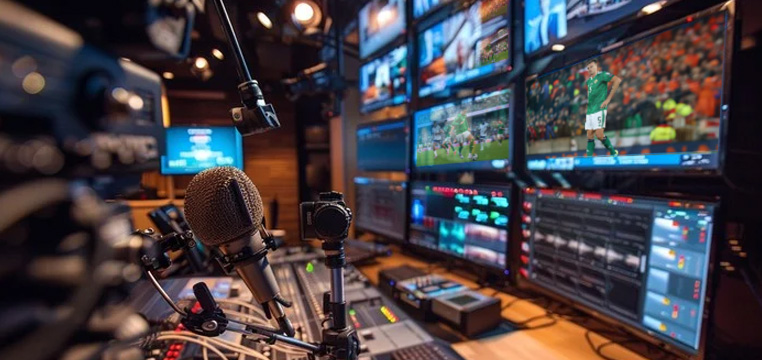
Key Tools and Equipment in Live Sports Production
Live sports production relies on a range of advanced equipment and digital tools, including:
Cameras
In live sports broadcasting, cameras play a crucial role in capturing the action as it unfolds in real time. They are the primary tools for bringing the excitement, intensity, and dynamics of the game to viewers who are watching on television or online platforms. High-quality broadcast cameras are equipped with advanced features such as zoom lenses, high frame rates, and stabilization systems to ensure clear, steady, and detailed footage from multiple angles.
Video Mixers
Video mixers, also known as switchers, are used to select, transmit, and composite multiple camera feeds and graphic overlays in real time in a live sports production. They enable operators to switch seamlessly between different camera angles and insert graphics.
Audio Mixers
Audio mixers combine multiple sound sources such as microphones, commentary feeds, music, and crowd noise, allowing the audio team to balance levels, enhance clarity, and add effects as needed in sports production workflow.
Computer Graphics (CG)
CG, or Computer Graphics, refers to digital visual elements created and inserted into a live sports broadcast. These include elements like scores, timers, player statistics, team logos, sponsor advertisements, and real-time animated graphics that are dynamically updated during the game. The CG operators are responsible for controlling these graphics, making sure they are accurately synchronized with the live action.
Router
A router in live sports broadcasting is a device that routes multiple video and audio signals from various sources to different destinations. In fact, it is responsible for managing and controlling all the signals involved in the production and live broadcast, ensuring that the right sources are sent to the appropriate outputs for switching, monitoring, and transmission.
Multiviewer
A multiviewer is a device that displays multiple video signals simultaneously on a single screen or panel. In live sports production and live sports broadcasting, it plays a crucial role in monitoring the entire sports production workflow. The broadcast multiviewer allows operators to keep an eye on all camera feeds, sources, and equipment status at once, which is especially important in remote sports production settings. By providing a clear overview of all inputs, it helps ensure that all video sources are functioning correctly and ready for broadcast. This improves coordination, speeds up troubleshooting, and helps maintain a smooth, error-free live broadcast.
Delay line control
A audio video delay in a live sports production acts as a buffer or delay system that allows producers and directors to review the live footage before it is broadcast to the audience. In the context of live sports broadcasting, it provides a crucial tool for censoring unwanted or inappropriate scenes, such as accidents or inappropriate behavior.
By introducing a slight delay, the production team can quickly monitor the live feed, decide if the content needs to be censored, and then pause or cut to prevent that scene from going live. This ensures a cleaner, more controlled broadcast and helps maintain broadcast standards, especially during live events where unpredictable moments can occur unexpectedly.
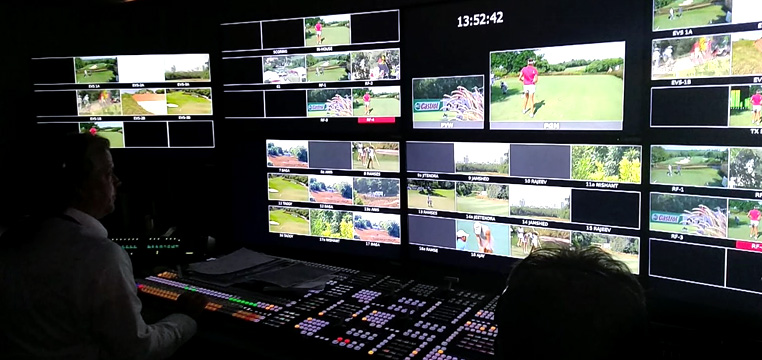
Tips for a Smooth Sports Broadcast Workflow
Technical Preparation: Ensure all equipment and replay systems are fully tested. Have backup equipment ready and verify internet and network connections for live feeds to prevent interruptions.
Communication: Maintain clear and reliable communication channels, such as intercoms and headsets, among team members. Hold a briefing before the broadcast to align everyone’s roles and responsibilities. Keep communication open throughout the event.
Timing and Synchronization: Keep track of game time, commercial breaks, and scheduled segments. Use countdowns and cues to smoothly transition between different parts of the broadcast, maintaining a seamless flow.
Real-Time Monitoring: Assign team members to monitor live feeds, statistics, and social media channels. Utilize real-time analytics to enhance storytelling and audience engagement.
Post-Broadcast Review: Conduct a debrief with your team to discuss what went well and what could be improved. Archive footage and data for future reference and planning.
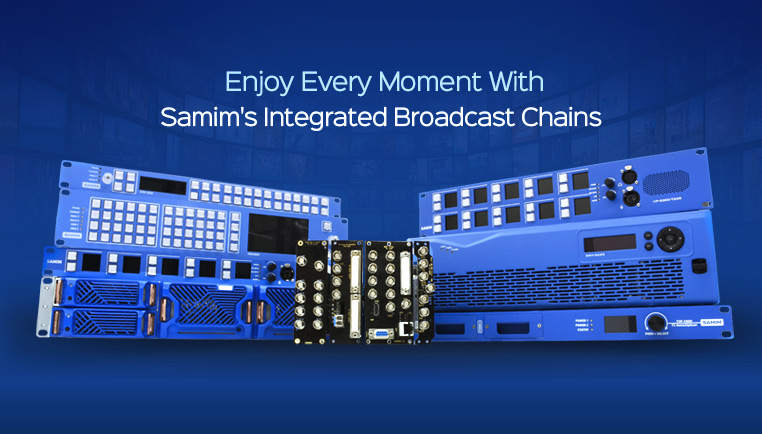
Samim Solutions for Live Sports Production
At Samim, we pride ourselves on being at the forefront of innovative technology solutions tailored for live sports broadcasting. With our expertise in designing and manufacturing advanced products such as routers, multiviewers, and other broadcasting equipment, we provide integrated solutions that elevate the quality and reliability of sports production workflow.
Our commitment goes beyond just delivering hardware. We focus on creating comprehensive, seamless workflows that enhance real-time production, ensuring smooth, high-quality broadcast experiences. From automated signal management to real-time data integration, our solutions are designed to meet the demanding requirements of live sports events.
We understand the critical importance of stability, flexibility, and precision in sports broadcasting. This is why we continuously invest in research and development to deliver cutting-edge products that provide the best support for broadcasters, production teams, and viewers alike.
